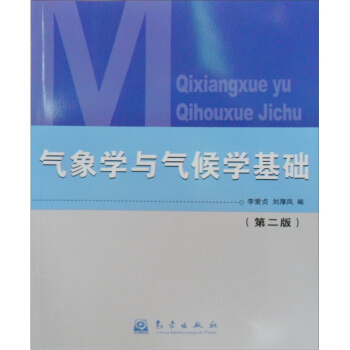![芯片制造:半导体工艺制程实用教程(第6版 英文版) [Microchip Fabrication: A Practical Guide to Semiconductor Processing, Sixth Edition]](https://pic.windowsfront.com/11589704/549377dcNa3f622b5.jpg)

具体描述
编辑推荐
半导体集成电路和器件制造技术著作,涉及半导体工艺的每个阶段技术发展。内容简介
《芯片制造:半导体工艺制程实用教程》是一本介绍半导体集成电路和器件制造技术的专业书籍,在半导体领域享有很高的声誉。本书的范围包括半导体工艺的每个阶段:从原材料的制备到封装、测试和成品运输,以及传统的和现代的工艺。全书提供了详细的插图和实例,每章包含回顾总结和习题,并辅以丰富的术语表。第六版修订了微芯片制造领域的新进展,讨论了用于图形化、掺杂和薄膜步骤的先进工艺和尖端技术,使隐含在复杂的现代半导体制造材料和工艺中的物理、化学和电子的基础知识更易理解。本书的主要特点是避开了复杂的数学问题介绍工艺技术内容;加入了半导体业界的新成果,可以使读者了解工艺技术发展的趋势。作者简介
Peter Van Zant 国际知名半导体专家,具有广阔的工艺工程、培训、咨询和写作方面的背景。他曾先后在IBM和德州仪器(TI)工作,之后在硅谷,又先后在美国国家半导体(National Semiconductor)和单片存储器(Monolithic Memories)公司任晶圆制造工艺工程和管理职位。他还曾在加利福尼亚州洛杉矶的山麓学院(Foothill College)任讲师,讲授半导体课程和针对初始工艺工程师的高级课程。目录
1 The Semiconductor Industry 1Introduction 1
Birth of an Industry 1
The Solid-State Era 3
Integrated Circuits (ICs) 4
Process and Product Trends 5
Moore’s Law 6
Decreasing Feature Size 6
Increasing Chip and Wafer Size 8
Reduction in Defect Density 9
Increase in Interconnection Levels 10
The Semiconductor Industry Association Roadmap 10
Chip Cost 11
Industry Organization 11
Stages of Manufacturing 12
Six Decades of Advances in Microchip Fabrication Processes 14
The Nano Era 16
Review Topics 17
References 17
2 Properties of Semiconductor Materials and Chemicals 19
Introduction 19
Atomic Structure 19
The Bohr Atom 19
The Periodic Table of the Elements 20
Electrical Conduction 23
Conductors 23
Dielectrics and Capacitors 23
Resistors 24
Intrinsic Semiconductors 24
Doped Semiconductors 25
Electron and Hole Conduction 26
Carrier Mobility 28
Semiconductor Production Materials 29
Germanium and Silicon 29
Semiconducting Compounds 29
Silicon Germanium 31
Engineered Substrates 31
Ferroelectric Materials 31
Diamond Semiconductors 32
Process Chemicals 32
Molecules, Compounds, and Mixtures 32
Ions 33
States of Matter 34
Solids, Liquids, and Gases 34
Plasma State 34
Properties of Matter 34
Temperature 34
Density, Specic Gravity, and Vapor Density 35
Pressure and Vacuum 36
Acids, Alkalis, and Solvents 37
Acids and Alkalis 37
Solvents 38
Chemical Purity and Cleanliness 38
Safety Issues 38
The Material Safety Data Sheet 39
Review Topics 39
References 39
3 Crystal Growth and Silicon Wafer Preparation 41
Introduction 41
Semiconductor Silicon Preparation 41
Silicon Wafer Preparation Stages 42
Crystalline Materials 42
Unit Cells 43
Poly and Single Crystals 43
Crystal Orientation 44
Crystal Growth 45
Czochralski Method 45
Liquid-Encapsulated Czochralski 47
Float Zone 47
Crystal and Wafer Quality 49
Point Defects 49
Dislocations 50
Growth Defects 50
Wafer Preparation 51
End Cropping 51
Diameter Grinding 51
Crystal Orientation, Conductivity, and Resistivity Check 51
Grinding Orientation Indicators 52
Wafer Slicing 53
Wafer Marking 54
Rough Polish 54
Chemical Mechanical Polishing 55
Backside Processing 55
Double-Sided Polishing 56
Edge Grinding and Polishing 56
Wafer Evaluation 56
Oxidation 57
Packaging 57
Wafer Types and Uses 57
Reclaim Wafers 57
Engineered Wafers (Substrates) 57
Review Topics 58
References 58
4 Overview of Wafer Fabrication and Packaging 59
Introduction 59
Goal of Wafer Fabrication 59
Wafer Terminology 59
Chip Terminology 61
Basic Wafer-Fabrication Operations 63
Layering 63
Patterning 64
Circuit Design 66
Reticle and Masks 68
Doping 69
Heat Treatments 69
Example Fabrication Process 72
Wafer Sort 74
Packaging 75
Summary 75
Review Topics 76
References 76
5 Contamination Control 77
Introduction 77
The Problem 77
Contamination-Caused Problems 80
Contamination Sources 81
General Sources 81
Air 81
Clean Air Strategies 82
Cleanroom Workstation Strategy 83
Tunnel or Bay Concept 85
Micro- and Mini-Environments 86
Temperature, Humidity, and Smog 87
Cleanroom Construction 88
Construction Materials 88
Cleanroom Elements 89
Personnel-Generated Contamination 93
Process Water 94
Process Chemicals 96
Equipment 99
Cleanroom Materials and Supplies 99
Cleanroom Maintenance 100
Wafer-Surface Cleaning 100
Particulate Removal 102
Wafer Scrubbers 102
High-Pressure Water Cleaning 103
Organic Residues 103
Inorganic Residues 103
Chemical-Cleaning Solutions 104
General Chemical Cleaning 104
Oxide Layer Removal 105
Room Temperature and Ozonated Chemistries 106
Water Rinsing 108
Drying Techniques 110
Contamination Detection 112
Review Topics 112
References 113
6 Productivity and Process Yields 115
Overview 115
Yield Measurement Points 115
Accumulative Wafer-Fabrication Yield 116
Wafer-Fabrication Yield Limiters 117
Number of Process Steps 118
Wafer Breakage and Warping 118
Process Variation 119
Mask Defects 120
Wafer-Sort Yield Factors 120
Wafer Diameter and Edge Die 121
Wafer Diameter and Die Size 122
Wafer Diameter and Crystal Defects 122
Wafer Diameter and Process Variations 123
Die Area and Defect Density 124
Circuit Density and Defect Density 125
Number of Process Steps 125
Feature Size and Defect Size 125
Process Cycle Time 125
Wafer-Sort Yield Formulas 125
Assembly and Final Test Yields 128
Overall Process Yields 128
Review Topics 129
References 130
7 Oxidation 131
Introduction 131
Silicon Dioxide Layer Uses 131
Surface Passivation 131
Doping Barrier 132
Surface Dielectric 132
Device Dielectric (MOS Gates) 133
Device Oxide Thicknesses 134
Thermal Oxidation Mechanisms 134
Influences on the Oxidation Rate 137
Thermal Oxidation Methods 140
Horizontal Tube Furnaces 140
Temperature Control System 141
Source Cabinet 143
Vertical Tube Furnaces 143
Rapid Thermal Processing 146
High-Pressure Oxidation 149
Oxidant Sources 151
Oxidation Processes 154
Preoxidation Wafer Cleaning 154
Postoxidation Evaluation 155
Surface Inspection 156
Oxide Thickness 156
Oxide and Furnace Cleanliness 156
Thermal Nitridation 156
Review Topics 157
References 157
8 The Ten-Step Patterning Process―Surface Preparation to Exposure 161
Introduction 161
Overview of the Photomasking Process 162
Ten-Step Process 165
Basic Photoresist Chemistry 167
Photoresist 167
Photoresist Performance Factors 169
Resolution Capability 169
Adhesion Capability 170
Process Latitude 171
Pinholes 172
Particle and Contamination Levels 173
Step Coverage 173
Thermal Flow 173
Comparison of Positive and Negative Resists 173
Physical Properties of Photoresists 175
Solids Content 175
Viscosity 175
Surface Tension 176
Index of Refraction 176
Storage and Control of Photoresists 176
Light and Heat Sensitivity 176
Viscosity Sensitivity 177
Shelf Life 177
Cleanliness 177
Photomasking Processes―Surface Preparation to Exposure 178
Surface Preparation 178
Particle Removal 178
Dehydration Baking 178
Wafer Priming 179
Spin Priming 180
Vapor Priming 180
Photoresist Application (Spinning) 181
The Static Dispense Spin Process 181
Dynamic Dispense 183
Moving-Arm Dispensing 183
Manual Spinners 183
Automatic Spinners 184
Edge Bead Removal 185
Backside Coating 185
Soft Bake 185
Convection Ovens 186
Manual Hot Plates 187
In-Line, Single-Wafer Hot Plates 187
Moving-Belt Hot Plates 187
Moving-Belt Infrared Ovens 188
Microwave Baking 188
Vacuum Baking 188
Alignment and Exposure 189
Alignment and Exposure Systems 189
Exposure Sources 191
Alignment Criteria 191
Aligner Types 193
Postexposure Bake 196
Advanced Lithography 198
Review Topics 198
References 198
9 The Ten-Step Patterning Process―Developing to Final Inspection 201
Introduction 201
Development 201
Positive Resist Development 201
Negative Resist Development 203
Wet Development Processes 203
Dry (or Plasma) Development 206
Hard Bake 207
Hard-Bake Methods 207
Hard-Bake Process 207
Develop Inspect 208
Develop Inspect Reject Categories 209
Develop Inspect Methods 209
Causes for Rejecting at the Develop Inspection Stage 211
Etch 212
Wet Etching 212
Etch Goals and Issues 212
Incomplete Etch 212
Overetch and Undercutting 213
Selectivity 214
Wet-Spray Etching 214
Silicon Wet Etching 214
Silicon Dioxide Wet Etching 215
Aluminum-Film Wet Etching 216
Deposited-Oxide Wet Etching 216
Silicon Nitride Wet Etching 216
Vapor Etching 217
Dry Etch 217
Plasma Etching 218
Etch Rate 220
Radiation Damage 220
Selectivity 220
Ion-Beam Etching 222
Reactive Ion Etching 222
Resist Effects in Dry Etching 223
Resist Stripping 223
Wet Chemical Stripping of Nonmetallized Surfaces 224
Wet Chemical Stripping of Metallized Surfaces 225
Dry Stripping 225
Post?Ion Implant and Plasma Etch Stripping 226
New Stripping Challenges 226
Final Inspection 227
Mask Making 227
Summary 229
Review Topics 229
References 230
10 Next Generation Lithography 233
Introduction 233
Challenges of Next Generation Lithography 233
High-Pressure Mercury Lamp Sources 235
Excimer Lasers 236
Extreme Ultraviolet 236
X-Rays 237
Electron Beam or Direct Writing 238
Numerical Aperture of a Lens 240
Other Exposure Issues 241
Variable Numerical Aperture Lenses 242
Immersion Exposure System 242
Amplified Resist 242
Contrast Effects 243
Other Resolution Challenges and Solutions 244
Off-Axis Illumination 245
Lens Issues and Reection Systems 245
Phase-Shift Masks 245
Optical Proximity Corrected or Optical Process Correction 245
Annular-Ring Illumination 246
Pellicles 247
Surface Problems 248
Resist Light Scattering 248
Subsurface Reectivity 248
Antireective Coatings 249
Standing Waves 249
Planarization 251
Photoresist Process Advances 252
Multilayer Resist or Surface Imaging 252
Silylation or DESIRE Process 254
Polyimide Planarization Layers 255
Etchback Planarization 256
Dual-Damascene Process 256
Chemical Mechanical Polishing 256
Slurry 259
Polishing Rates 259
Planarity 260
Post-CMP Clean 261
CMP Tools 261
CMP Summary 262
Reow 262
Image Reversal 262
Contrast Enhancement Layers 262
Dyed Resists 264
Improving Etch Denition 264
Lift-Off Process 264
Self-Aligned Structures 264
Etch Prole Control 266
Review Topics 266
References 266
11 Doping 269
Introduction 269
The Diffusion Concept 269
Formation of a Doped Region and Junction 271
The N-P Junction 272
Doping Process Goals 273
Graphical Representation of Junctions 273
Concentration versus Depth Graphs 273
Lateral Diffusion 273
Same-Type Doping 275
Diffusion Process Steps 275
Deposition 275
Dopant Sources 278
Drive-In Oxidation 280
Oxidation Effects 281
Introduction to Ion Implantation 281
Concept of Ion Implantation 283
Ion-Implantation System 284
Implant Species Sources 284
Ionization Chamber 284
Mass Analyzing or Ion Selection 284
Acceleration Tube 286
Wafer Charging 286
Beam Focus 287
Neutral Beam Trap 287
Beam Scanning 287
End Station and Target Chamber 289
Ion-Implant Masks 290
Dopant Concentration in Implanted Regions 291
Crystal Damage 292
Annealing and Dopant Activation 292
Channeling 293
Evaluation of Implanted Layers 294
Uses of Ion Implantation 295
The Future of Doping 297
Review Topics 297
References 298
12 Layer Deposition 299
Introduction 299
Film Parameters 301
Chemical Vapor Deposition Basics 302
Basic CVD System Components 303
CVD Process Steps 305
CVD System Types 305
Atmospheric-Pressure CVD Systems 306
Horizontal-Tube Induction-Heated APCVD 306
Barrel Radiant-Induction-Heated APCVD 307
Pancake Induction-Heated APCVD 307
Continuous Conduction-Heated APCVD 308
Horizontal Conduction-Heated APCVD 309
Low-Pressure Chemical Vapor Deposition 309
Horizontal Conduction-Convection-Heated LPCVD 309
Ultra-High Vacuum CVD 310
Plasma-Enhanced CVD (PECVD) 310
High-Density Plasma CVD 312
Atomic Layer Deposition 313
Vapor-Phase Epitaxy 315
Molecular Beam Epitaxy 315
Metalorganic CVD 317
Deposited Films 318
Deposited Semiconductors 318
Epitaxial Silicon 318
Polysilicon and Amorphous Silicon Deposition 324
SOS and SOI 325
Gallium Arsenide on Silicon 326
Insulators and Dielectrics 326
Silicon Dioxide 326
Doped Silicon Dioxide 327
Silicon Nitride 328
High-k and Low-k Dielectrics 329
Conductors 329
Review Topics 329
References 330
13 Metallization 333
Introduction 333
Deposition Methods 333
Single-Layer Metal Systems 334
Multilevel Metal Schemes 335
Conductors Materials 336
Aluminum 336
Aluminum-Silicon Alloys 336
Aluminum-Copper Alloy 337
Barrier Metals 338
Refractory Metals and Refractory Metal Silicides 338
Plugs 339
Sputter Deposition 340
Copper Dual-Damascene Process 345
Low-k Dielectric Materials 345
The Dual-Damascene Copper Process 346
Barrier or Liner Deposition 348
Seed Deposition 348
Electrochemical Plating 348
Chemical-Mechanical Processing 349
CVD Metal Deposition 349
Doped Polysilicon 349
CVD Refractory Deposition 350
Metal-Film Uses 351
MOS Gate and Capacitor Electrodes 351
Backside Metallization 351
Vacuum Systems 351
Dry Mechanical Pumps 352
Turbomolecular Hi-Vac Pumps 352
Review Topics 353
References 353
14 Process and Device Evaluation 355
Introduction 355
Wafer Electrical Measurements 356
Resistance and Resistivity 356
Resistivity Measurements 356
Four-Point Probe 356
Process and Device Evaluation 358
Sheet Resistance 358
Four-Point Probe Thickness Measurement 358
Concentration or Depth Prole 359
Secondary Ion Mass Spectrometry 359
Optically Modulated Optical Reflection (Thermawave) 360
Physical Measurement Methods 360
Layer Thickness Measurements 360
Color 360
Spectrophotometers or Reectometry 361
Ellipsometers 363
Stylus (Surface Prolometers) 363
Photoacoustic 365
Four-Point Probe 365
Ultra-Thin MOSFET Gate Thickness 365
Gate Oxide Integrity Electrical Measurement 365
Junction Depth 365
Groove and Stain 365
Scanning Electron Microscope Thickness Measurement 367
Spreading Resistance Probe 367
Secondary Ion Mass Spectrometry 367
Scanning Capacitance Microscopy 368
Scanning Electron Microscope Thickness Measurement 368
Critical Dimensions and Line-Width Measurements 369
Optical Image-Shearing Dimension Measurement 369
Shape Metrology and Optical Critical Dimension 370
Contamination and Defect Detection 370
1× Visual Surface Inspection Techniques 370
1× Collimated Light 370
1× Ultraviolet 372
Microscope Techniques 372
Automated In-Line Defect Inspection Systems 376
General Surface Characterization 378
Atomic Force Microscopy 378
Scattrometry 380
Contamination Identication 380
Auger Electron Spectroscopy 380
Electron Spectroscope for Chemical Analysis 381
Time of Flight Secondary Ion Mass Spectrometry 381
Evaluation of Stack Thickness and Composition 382
Device Electrical Measurements 382
Equipment 383
Resistors 383
Diodes 384
Bipolar Transistors 386
MOS Transistors 387
Capacitance-Voltage Profiling 387
Device Failure Analysis―Emission Microscopy 390
Review Topics 390
References 391
15 The Business of Wafer Fabrication 393
Introduction 393
Moore’s Law and the New Wafer-Fabrication Business 393
Wafer-Fabrication Costs 394
Overhead 395
Materials 395
Equipment 396
Labor 397
Production Cost Factors 397
Yield 398
Yield Improvements 398
Yield and Productivity 399
Increasing Wafer Diameters 400
Book-to-Bill Ratio 401
Cost of Ownership 402
Automation 402
Process Automation 402
Wafer-Loading Automation 403
Clustering 403
Wafer-Delivery Automation 404
Closed-Loop Control-System Automation 405
Factory-Level Automation 405
Equipment Standards 407
Fab Floor Layout 407
Batch versus Single-Wafer Processing 407
Green Fabs 408
Statistical Process Control 409
Inventory Control 412
Just-in-Time Inventory Control 413
Quality Control and Certication―ISO 9000 414
Line Organization 414
Review Topics 415
References 416
16 Introduction to Devices and Integrated Circuit Formation 417
Introduction 417
Semiconductor-Device Formation 417
Resistors 418
Capacitors 420
Diodes 422
Transistors 424
Field-Effect Transistors 427
Alternatives to MOSFET Scaling Challenges 434
Conductors 434
Integrated-Circuit Formation 436
Bipolar Circuit Formation 437
MOS Integrated Circuit Formation 441
Bi-MOS 445
Silicon on Insulator Isolation 445
System on (a) Chip 446
Superconductors 446
Microelectromechanical Systems 447
Strain Gauges 447
Batteries 447
Light-Emitting Diodes 447
Optoelectronics 448
Solar Cells 448
Temperature Sensing 448
Acoustic Wave Devices 448
Review Topics 449
References 449
17 Process and Device Evaluation 451
Introduction 451
Circuit Basics 451
Integrated Circuit Types 454
Logic Circuits 454
Memory Circuits 457
Redundancy 461
The Next Generation 462
Review Topics 464
References 464
18 Packaging 465
Introduction 465
Chip Characteristics 466
Package Functions and Design 468
Substantial Lead System 468
Physical Protection 468
Environmental Protection 469
Heat Dissipation 469
Common Package Parts 469
Cleanliness and Static Control 471
Basic Bonding Processes 472
Wire Bonding Process 473
Prebonding Wafer Preparation 473
Die Separation 474
Die Pick and Place 475
Die Inspection 476
Die Attach 476
Wire Bonding 477
Tape Automated Bonding Process 480
Bump or Ball Flip-Chip Bonding 480
Example Bump or Ball Process 482
Copper Metallization (Damascene) Bump Bonding 482
Reow 483
Die Separation and Die Pick and Place 483
Alignment of Die to Package 483
Attachment to Package (or Substrate) 483
Deux 483
Underllment 484
Encapsulation 484
Postbonding and Preseal Inspection 484
Sealing Techniques 484
Lead Plating 486
Plating Process Flows 487
Lead Trimming 487
Deashing 488
Package Marking 488
Final Testing 489
Environmental Tests 489
Electrical Testing 490
Burn-In Tests 491
Package Design 491
Metal Cans 492
Pin Grid Arrays 493
Ball-Grid Arrays or Flip-Chip Ball-Grid Arrays 493
Quad Packages 493
Thin Packages 494
Chip-Scale Packages 494
Lead on Chip 494
Three-Dimensional Packages 494
Stacking Die Techniques 495
Three-Dimensional Enabling Technologies 497
Hybrid Circuits 498
Multichip Modules 498
The Known Good Die Problem 498
Package Type or Technology Summary 499
Package or PCB Connections 499
Bare Die Techniques and Blob Top 500
Review Topics 500
References 501
Glossary 502
Index 521
前言/序言
用户评价
在学习电子工程的过程中,我对半导体器件的制造过程一直感到十分神秘。这本书《芯片制造:半导体工艺制程实用教程(第6版 英文版)》的出现,正好满足了我对这方面的求知欲。我期待它能够以一种非常系统和深入的方式,带领我一步步了解芯片制造的复杂流程。从最基础的硅片制备,到光刻、刻蚀、薄膜生长、离子注入等关键步骤,再到最终的测试和封装,我希望这本书能够提供详细的解释,并且用清晰的图示来辅助理解。我特别希望书中能够深入讲解每一种工艺的原理,以及它们在实际生产中是如何实现的。作为一本“实用教程”,我设想它不仅会阐述理论,更会包含一些实际操作的经验、常见问题的分析,甚至是关于设备和材料的选择。第六版的更新,也让我相信这本书的内容是最新的,能够帮助我了解当前半导体制造领域最先进的技术和发展方向。
评分在我看来,芯片制造是现代工业皇冠上的明珠,而这本书《芯片制造:半导体工艺制程实用教程》则是一本关于这颗明珠的详细解析。我希望它能够像一本精密的蓝图,将半导体制造的每一个步骤都清晰地呈现出来。我期待书中能够深入讲解光刻、刻蚀、薄膜沉积、离子注入等核心工艺的原理、过程以及关键参数的控制。我希望能够通过书中的描述,理解为何如此微小的结构能够承载如此强大的计算能力,以及这些工艺是如何在纳米尺度上实现的。作为一本“实用教程”,我更希望它能够提供一些关于实际生产中的挑战、解决方案以及工艺优化方面的见解。第六版的推出,也让我相信这本书能够提供关于半导体制造领域的最新技术和发展动态,帮助我跟上时代的步伐。
评分这本书的封面设计就散发着一种严谨而专业的味道,深邃的蓝色基调搭配着清晰的白色字体,让人一眼就能感受到其中蕴含的专业知识。虽然我还没有来得及深入阅读,但单凭这精致的装帧和书名“芯片制造:半导体工艺制程实用教程”的份量,就足以激起我对这个复杂而迷人的领域的强烈好奇心。我一直对科技的进步深感着迷,尤其是在信息时代,芯片作为现代科技的“心脏”,其制造过程的精妙之处更是让我充满了探索的渴望。我知道半导体工艺制程是一门极其复杂的学科,涉及到物理、化学、材料科学以及精密机械工程等多个交叉学科的知识。我设想这本书一定能够带领我一步步揭开这层神秘的面纱,从最基础的概念讲起,逐步深入到各种复杂的工艺流程。我期待着它能够以一种清晰易懂的方式,将那些抽象的科学原理转化为直观的理解,让我能够真正领略到工程师们是如何在微观世界里雕刻出如此精密的“艺术品”的。书名中的“实用教程”四个字更是让我信心倍增,这意味着它不仅仅是理论的堆砌,更包含了丰富的实践指导和案例分析,能够帮助读者将理论知识与实际操作相结合,这对于我这样一个希望对半导体制造有更深入了解的读者来说,无疑是弥足珍贵的。我迫不及待地想翻开第一页,开始我的这段知识探索之旅。
评分对于一个对科技充满好奇心的人来说,了解芯片是如何被制造出来的,就像是揭开了一个巨大的谜团。这本书《芯片制造:半导体工艺制程实用教程》的标题,让我看到了解开这个谜团的钥匙。我希望这本书能够系统地介绍半导体制造的整个流程,从晶圆的准备、光刻、刻蚀、薄膜沉积、离子注入,到最后的测试和封装。我期待它能够用清晰的语言和丰富的插图,来解释那些复杂的工艺原理,让我能够理解每一个步骤的重要性以及它们如何协同工作。我尤其希望它能够提供一些关于不同工艺技术的优缺点分析,以及它们在不同类型的芯片制造中的应用。作为一本“实用教程”,我希望它能包含一些实际操作的经验和技巧,帮助我更好地理解这些技术在实际生产中的应用。第六版的更新,也表明它能够提供最新的行业信息和技术进展。
评分我在寻找一本能够深入了解芯片制造过程的书籍,偶然间看到了《芯片制造:半导体工艺制程实用教程(第6版 英文版)》。这本书的标题就非常吸引我,因为它直接点出了我最想了解的核心内容——芯片制造的工艺制程。我一直对科技的进步感到惊叹,而半导体芯片无疑是现代科技发展的基石。我希望这本书能够详细地介绍从原材料的提纯到最终芯片封装的每一个环节,并且能够用清晰易懂的语言来解释那些复杂的科学原理。我设想书中会有大量的图表和示意图,能够帮助我直观地理解那些微观世界的工艺流程。同时,“实用教程”的定位也让我非常期待,我希望这本书不仅仅是理论知识的阐述,更能提供一些实际操作的指导和案例分析,让我能够更好地理解这些工艺在实际生产中的应用。作为第六版,我相信这本书的内容是经过不断更新和完善的,能够反映半导体制造领域的最新进展。我对这本书寄予厚望,希望它能成为我深入了解芯片制造的绝佳入门读物。
评分我最近对半导体行业产生了浓厚的兴趣,尤其是在了解到我们生活中无处不在的电子产品都离不开那些微小的芯片之后。这本书的名字——《芯片制造:半导体工艺制程实用教程》,立刻就吸引了我的注意。它听起来就像是通往这个神秘世界的一扇大门,而且“实用教程”这个词,预示着它不会是那种枯燥乏味的学术著作,而是能够真正帮助我理解实际操作的指南。我一直对那些精密的制造过程感到好奇,想象着在洁净室里,无数的工程师是如何通过一系列复杂而又精确的步骤,将原材料变成我们现在所依赖的各种智能设备的核心。我希望这本书能够详细地解释各种工艺,比如光刻、刻蚀、薄膜沉积等等,并且用图文并茂的方式来展示这些过程。我希望它能帮助我理解为什么这些步骤如此重要,以及它们对最终芯片性能的影响。同时,我也希望它能提供一些关于行业发展趋势的见解,让我能够对未来的科技发展有一个更宏观的认识。这本书的第六版也表明了它经过了时间的考验和内容的更新,相信能够提供最新、最准确的信息。我非常期待这本书能成为我学习半导体制造的启蒙读物。
评分我一直对现代科技的魔力感到惊叹,而半导体芯片无疑是其中的核心。这本书《芯片制造:半导体工艺制程实用教程》的标题让我眼前一亮,因为它直接指向了我一直想深入了解的领域。我希望这本书能够像一位经验丰富的向导,带领我深入探索芯片制造的每一个环节。我期待它能够详细解释诸如光刻、刻蚀、薄膜沉积、掺杂等关键工艺的原理和操作方法。我希望它能够用通俗易懂的语言,将那些复杂的物理和化学概念阐述清楚,并且用大量的图表和示意图来帮助我更好地理解。同时,作为一本“实用教程”,我也希望它能够包含一些实际生产中的案例,以及工程师们在面临挑战时是如何解决问题的。第六版的出版,也让我相信这本书的内容是经过不断更新和完善的,能够反映半导体制造领域的最新技术和发展趋势。
评分我对科技发展的脉络有着浓厚的兴趣,尤其是在计算能力爆炸式增长的今天,理解芯片的制造过程显得尤为重要。这本书的标题《芯片制造:半导体工艺制程实用教程》正是我所需要的。我设想这本书会像一本工艺手册一样,细致地剖析半导体制造的每一个步骤,从晶圆的制备、光刻胶的涂覆、紫外线曝光,到化学刻蚀、薄膜的沉积、材料的掺杂,再到最后的电路的测试和封装。我希望它能够解答我在这个领域的一些基本疑问,比如不同材料在芯片制造中的作用,不同工艺参数对芯片性能的影响,以及如何实现如此高精度的制造。我期待这本书能够以清晰的语言和丰富的插图,将复杂的半导体物理和化学原理转化为易于理解的概念。同时,“实用教程”的字眼也暗示了它将包含一些实际操作的经验和技巧,这对于想要深入了解这个行业的我来说,是非常有价值的。第六版的更新,也让我相信它能够涵盖当前行业内的最新技术和发展趋势。
评分在探索微电子领域的时候,我常常被那些肉眼看不见的精妙工艺所吸引。这本书的名字——《芯片制造:半导体工艺制程实用教程》,一下子就击中了我的兴趣点。我一直对芯片是如何被制造出来的感到好奇,特别是那些复杂的化学和物理过程,它们如何在微米甚至纳米的尺度上进行操作,最终赋予芯片强大的计算能力。我希望这本书能够提供一个系统性的学习框架,从最基础的硅晶圆制造,到光刻、刻蚀、薄膜沉积、离子注入等核心工艺,再到最后的测试和封装,能够逐一进行详细的讲解。我尤其期待书中能够提供一些关于不同工艺技术的优缺点对比,以及它们在现代芯片设计中的应用场景。作为一本“实用教程”,我希望它能够包含一些实际操作的建议,甚至是一些常见问题的排查方法,这样我才能更好地理解这些理论知识在实际生产中的价值。第六版的更新,也让我相信它能提供关于最新的技术和趋势的洞察,这对于想要跟上行业发展的人来说至关重要。
评分一直以来,我对现代科技的基石——半导体芯片充满了好奇,特别是它们是如何在微观世界里被创造出来的。这本书《芯片制造:半导体工艺制程实用教程》的标题就直接点出了我的需求。我希望这本书能够成为一个全面的指南,详细介绍从最初的晶圆制造到最终芯片出厂的每一个关键步骤。我设想它会深入探讨光刻技术、刻蚀工艺、薄膜沉积技术、离子注入以及金属化等核心的半导体工艺,并且用清晰易懂的语言来解释这些过程背后的物理和化学原理。我尤其期待书中能够包含一些实际的案例分析,或者是对不同工艺选择的权衡,这样我才能更深刻地理解这些技术如何在实际生产中发挥作用,以及它们对芯片性能和成本的影响。作为一本“实用教程”,我希望它能够提供一些操作上的指导,帮助我理解工程师们在实际操作中会遇到的挑战和解决方案。第六版的更新,也意味着这本书能够反映半导体制造领域的最新技术和发展趋势,这对于想要了解这个行业的最新动态的我来说,是非常有价值的。
评分第一次京东上买书,正版,还可以
评分不错
评分印刷质量不错aaaaa
评分书很好,希望能学到很多知识
评分快递很快,书的质量也很不错
评分是正版书,送货速度快。
评分书籍纸张质量稍差
评分英文版的书,还没看,感觉不错,等看后再评价
评分书看起来是正品,物流送货速度也是很快,当天就收到了,目前学习中!
相关图书
本站所有内容均为互联网搜索引擎提供的公开搜索信息,本站不存储任何数据与内容,任何内容与数据均与本站无关,如有需要请联系相关搜索引擎包括但不限于百度,google,bing,sogou 等,本站所有链接都为正版商品购买链接。
© 2026 windowsfront.com All Rights Reserved. 静流书站 版权所有

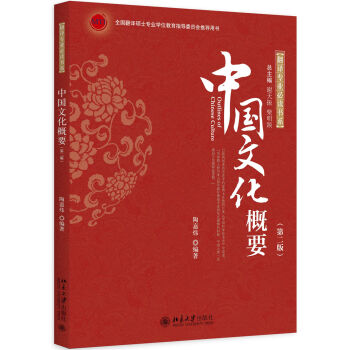
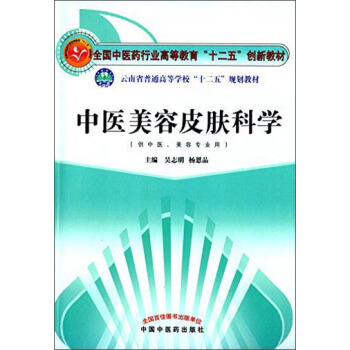
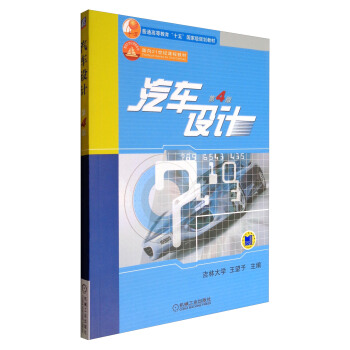

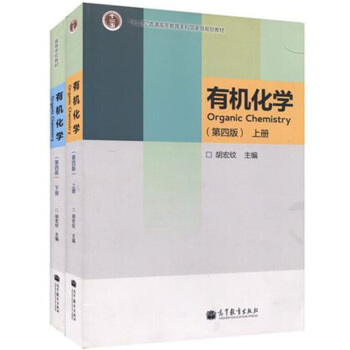
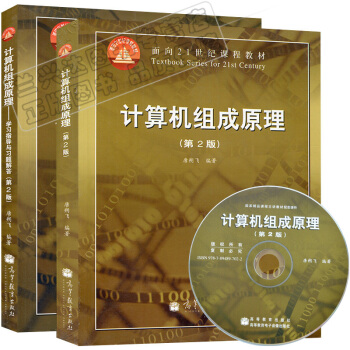
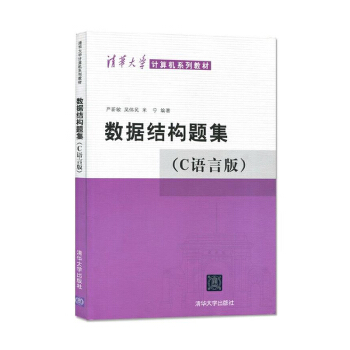
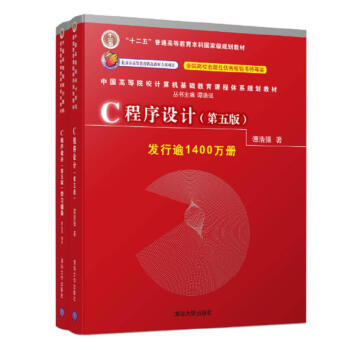
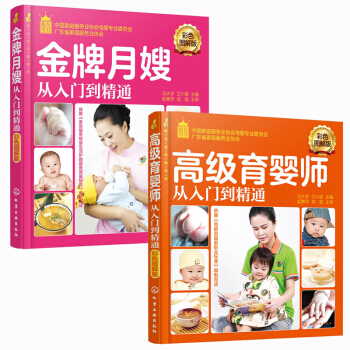
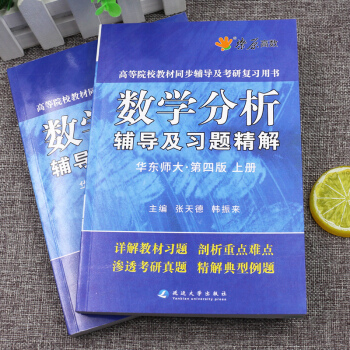
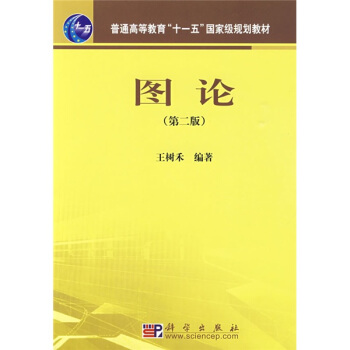
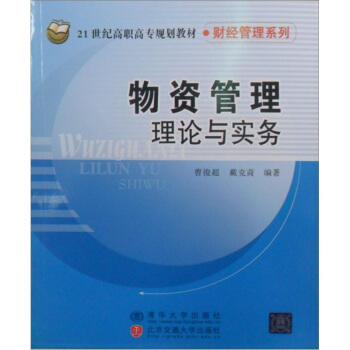
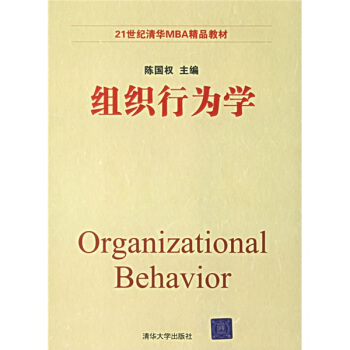
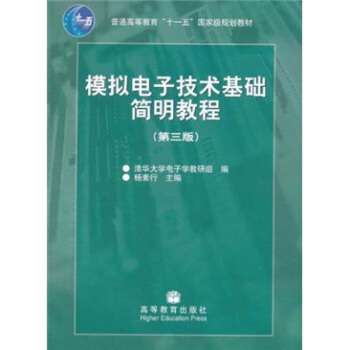
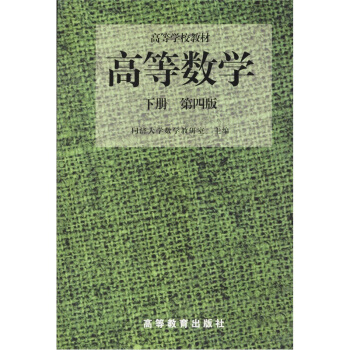
![高等教育百门精品课程教材:兽医病理学(第3版) [Veterinary Pathology] pdf epub mobi 电子书 下载](https://pic.windowsfront.com/11168045/rBEQWFD_S3oIAAAAAAn5pLC7UrMAAAExQPOB44ACfm8555.jpg)
![体验商务英语视听说教程2(教师用书)(附MP3光盘1张) [Powerhouse:Viewing,Lietening & Speaking] pdf epub mobi 电子书 下载](https://pic.windowsfront.com/11172046/5637097eNb0d06428.jpg)

